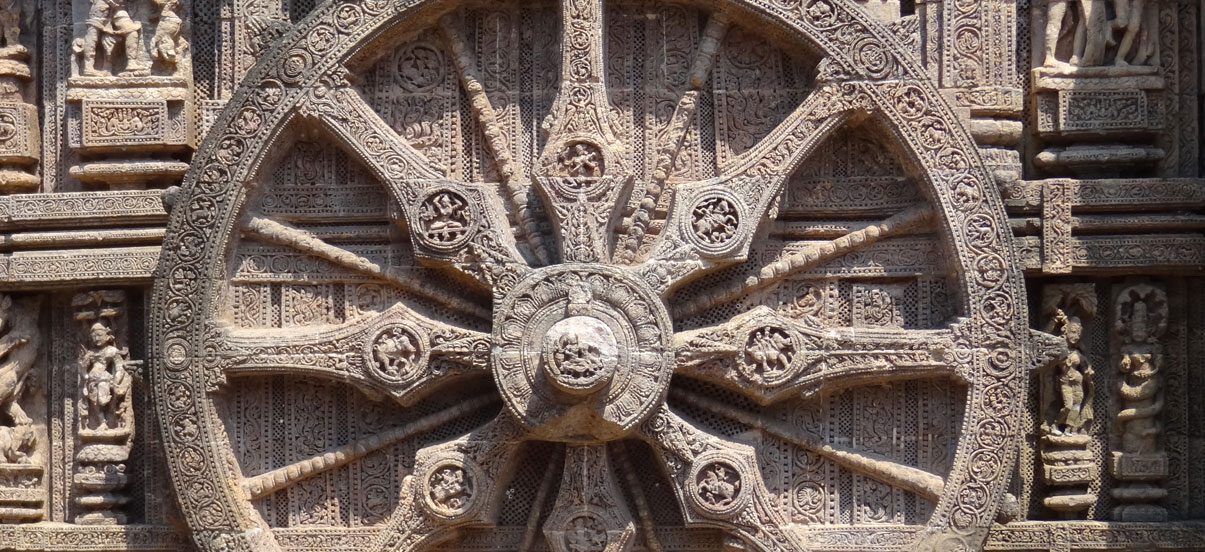Resting for about twelve months, spring comes with sheer joy and happiness. Usually spring arrives during the month of March and April with various fairs and festivals. And then the full of odisha dances. Among these dances forms, Danda Nacha is very popular in the Southern part of Odisha. Danda Nata of Odisha, also known as the ‘Danda Jatra’. Danda Nacha is an unusual ritual performed by devotees in the Ganjam District of Odisha to appease Goddess Kali. Danda Nacha means ‘Punishment Dance’ and in the ritual devotees inflicts pain on themselves.
At the time of Goddess Bashaktis Chaitra Festival this Danda Nacha is celebrated in a grand manner with much enthusiasm. Performed over a period stretching over thirteen days, Danda Nacha is a robust show of devotion to Lord Shiva and Goddess Kali. This dance festival is regularly held by an old traditional organization Danda. People also celebrate Danda Brata Rudrakali Brata, Rudrakali fasting, Mesu along with Danda Nacha Jatra which are very popular among local audiences. In Western Odisha, this is popularly known as Danor Kosali Dan. It can be regarded as both traditional and contemporary.
The opening ceremony beings in the middle of Chaitra (March-April) and continues till the Meru Sankranti variously known as Bisuba Sankranti, Pana Sankranti, etc.
Goddess Kali is the main deity worshipped during Danda Nacha. So all the Shiva Temples of every village becomes the centre of all activities. All those bound by a pledge a silent, inward pledge known as Sahami to connect the Danda Nacha troupe assemble at the Temple clad in white linen. Beside the temple, there is a hall named Kamana Ghara or Danda Ghara. A yajna is conducted there with offerings to the holy fire accompanied by the chanting of mantras. When the yajna is over the priest offers a sacrosanct thread to each dandua.
After performing in the inaugrual rituals, the above troupe leaves for a procession by beating the dhol (a drum like instrument) Jhanja (Cymbal) and mahuri (A Shehnai type of instrument). Proceeding the procession goes towards a few furlongs away from the Temple. They also hold flags of many hues, bunches of peacock feathers, a painting of Goddess Kali fixed to bamboo pole and a torch made from straw lit in the yajna fired called Chama Bara.
The three different form of Danda are Pani Danda, Dhuli Danda and Agni Danda. Dhuli Danda is very very painful, since it is observed on hot dusts under scorching sun in the month of Chaitra, ‘Pani Danda’ which means ‘Penance by the Water’.The devotees are called Bhagatas. One among them is called Pata Bhagata or Pata Dandua, who leads the group of devotees. The number of days of observation is always uneven, i.e. 7, 9,11,13,19 or 21. Whatever may be the days of observation, the process will end with Mahabisuba Sankaranti.It is a unique culture in Odisha, which permits devotees of all the segment of Hindu society.
During the thirteen-day period, the Danduas live on the frugal vegetarian meal a day. During this the drums keep on playing, for the tera Budhuta are supposed to eat with utmost concentration and no other sound is expected to reach their ears when they eat. After their meal they prepare for their nocturnal performance.
On the ‘Meru Sankranti’ day the party returns to their village. Then they perform their common “Dhuli Danda’ in front of a house holder of the village. And son after this they perform another breathtaking ritual at “Kamana Ghar’. A yajana is performed and a structure with the poles, two on the either side of the yajna pit and the third one at the top connecting the tow is set up. After the chanting of incarnation, a ‘Tera Budhuta’ is made to swing on the horizontal pole above, putting his head down wards and body bent at the keen, tied till a few drops of blood oozing through his nostrils are wiped away and in a half-conscious state. That night the Chadheya Nata is enacted for the last time. Then the following morning the “Tera Budhuta’ discarded their threads, they have been warning since the inaugural day during their bath.
1











